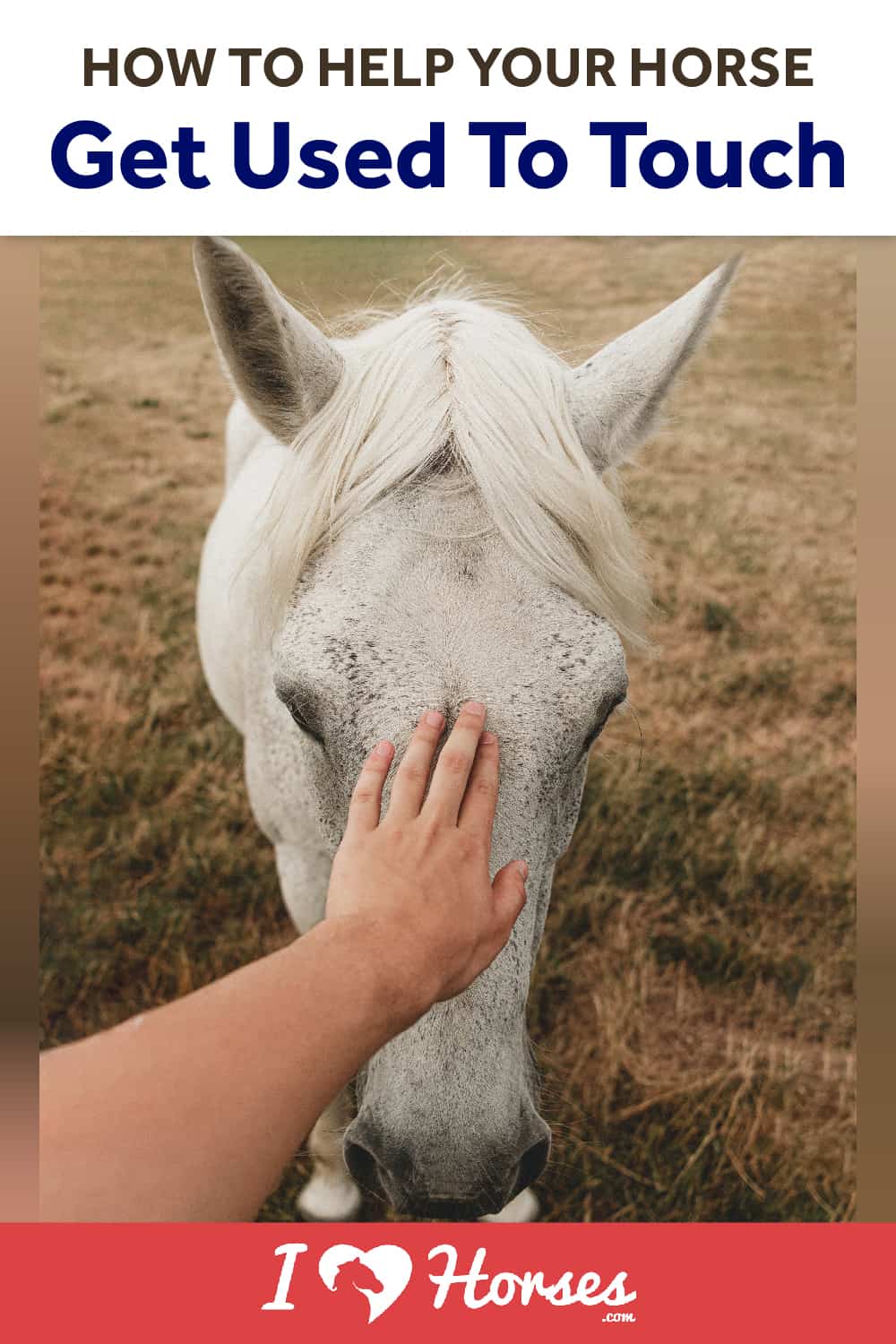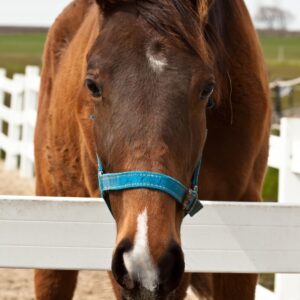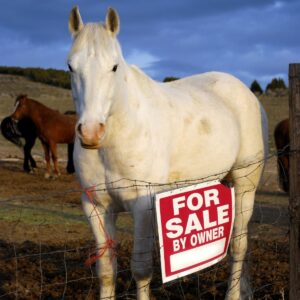In the first part of this series, we covered developing a positive leadership role with your horse. It cannot be said enough how important this role is to build your horse's confidence. The article also explains techniques for haltering an abused horse that doesn't want to be haltered. This part of the series, we will discuss teaching a horse to let you touch them everywhere. This article is geared toward abused horses but will work just as good for all horses.
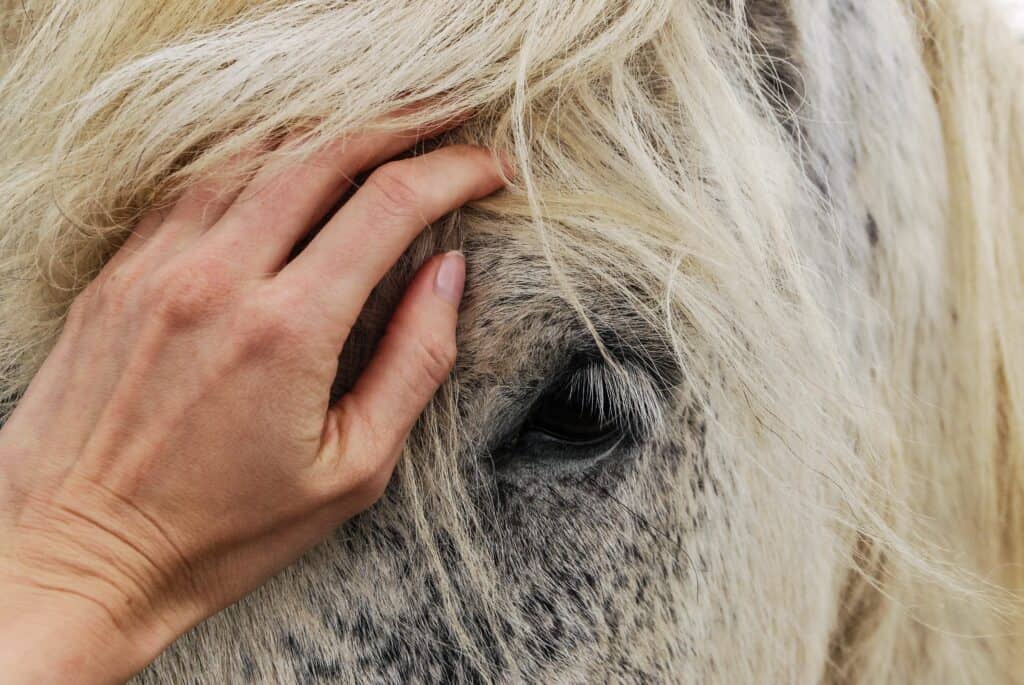
Baby Steps
Building confidence in your horse will take baby steps. For each step forward, there might be two steps back. It is vital to remember that abused horses have long memories of their abuse. Try to understand their fear and be patient.
Body Language
We have to remember that horses are masters at reading body language. They know when we are happy, sad, or mad. If you are having a bad day, it is advisable not to ask the horse for any new steps. Instead, work on what they already let you do, or have a "counseling session" and tell your horse about why you are having a bad day.
Touching the Neck
Horses are curious and cautious by nature. We can use this to our advantage. Turn the horse loose in the round pen or small corral. Hang out with the horse, walking quietly around at a distance. You want to put very little physical or mental pressure on him at this point.
The video below shows a wild mustang's first touch, and is an exceptional example of how to do this. In the video, the horse has a halter put on by the wild horse association, while confined. Other than that, the horse has not been touched by human hands.
The lady lets the horse know she is there. But she leaves it up to the horse to come up to her. She raises her hand and enables the horse to move away, while she also moves away, relieving the pressure. This step is repeated until the horse is willing to stay longer. This can take several training sessions. Do not rush the process. Eventually, the lady can remove the old halter and replace it with a new one and starts teaching the horse to lead.
Using a Towel on the Face and Neck
Our next step is to introduce the horse to a rag. Any clean cloth will work for this. However, one that has your scent on it is best. Horses can not see very well directly in front of them. So, they explore new things with their lips and sense of smell. Hold up the rag and let the horse give it a proper inspection. Then gently start rubbing the horse's face with it. If they move away, treat the situation the same way recommended for touching the neck.
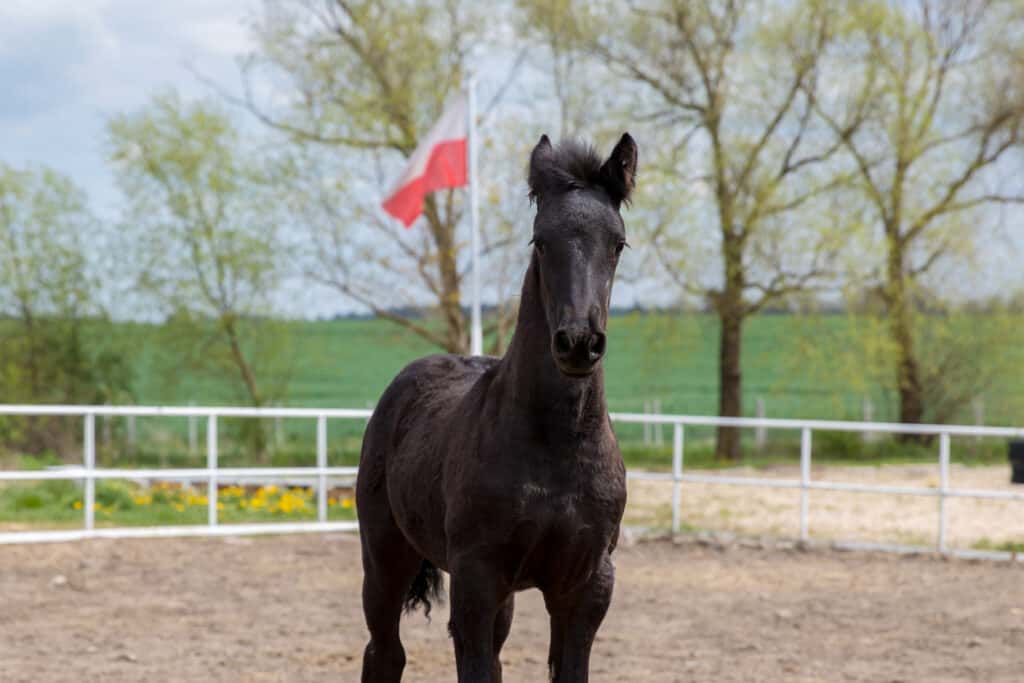
Desensitizing to a Lunge Whip
In this exercise, it is essential to remember that the lunge whip is NOT to be used as a whip! The string on the whip should be limp and never move fast or make a cracking sound. Think of it as a wet noddle. Introduce it slowly, especially if you do not know what abuse the horse has suffered.
Think of the whip as an extension of your arm to help keep you out of harm's way. This step is necessary so you can touch the rear legs without being hurt. It will also help desensitize your horse to things like limbs rubbing on them, ropes touching the legs, etc.
We need to desensitize the horse to the lunge whip before we move on to the next step. The video below explains this process very clearly. The goal is to get the horse to allow you to touch his whole body, including those dangerous legs, with the string or tip of the whip. It is not recommended to move past this stage until the horse can stand calm and relaxed while accepting the touch of the whip and string.
Attach the Towel to the Lunge Whip
Attach a rag to the end of the whip. A large hand towel will work well for this. Remember, if you can use one with your smell. Sleeping with the towel on your pillow is a good way to make it smell like you. Now use the whip as an extension of your arm and rub the horse all over with the rag. This should be done until the horse accepts the touch of the cloth all over his body.
Touch with Hands
After desensitizing the horse to the whip and rag, it is time to move on to touching with your hands. Remember, horses can kick forward, sideways, and backward with their hind legs. They can also strike forwards with the front legs. Always be aware of what those legs are doing, especially the hind legs. Here is our article on 5 Ways to Avoid Getting Kicked by a Horse, a great read for all who interact with horses.
Rub your horse with long repetitive strokes. They also like to be scratched in a particular area. At this point, leave the ears alone. Their ears are very sensitive and a major survival tool.Unfortunately, abusers have been known to twist or bite ears to get a horse to do their bidding. Here is our article on The Best Places to Pet a Horse and Areas to Avoid which you may find useful.
Grooming Tools
Next is to introduce brushes, curry combs, and other grooming tools. Always let the horse inspect the tool. Start grooming in the safety zone of the neck and shoulder. Then work your way back toward the hindquarters.
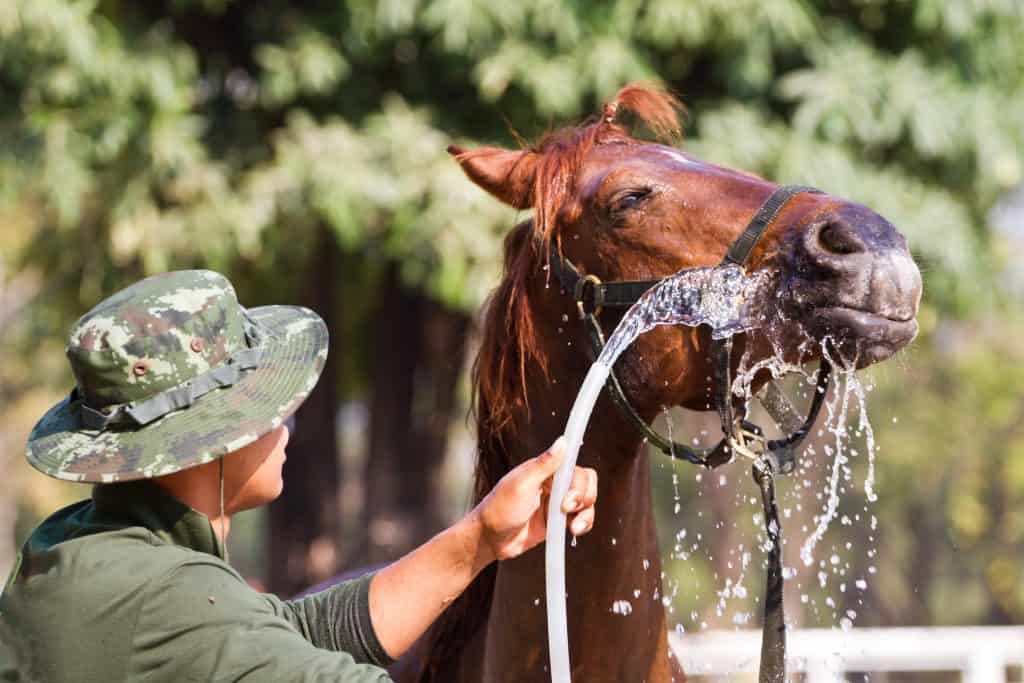
Water from the Hose
Don't forget to introduce water from the hose as a grooming tool. Again, let the horse examine what is coming out of the hose. Water should be applied to the bottom of the legs first and work your way up. Let the water gently flow, do not spray it. Once the horse has no fear of water, then you can start using a spray that is not too harsh. An excellent way to judge this is if you would like that strong of a spray or not.
Legs (danger zones that can't be avoided)
It is understandable to be fearful of those powerful legs. But as horse owners, we have to take care of all our horse's needs. Hoof care is a major priority. The farrier cannot do his job correctly if the horse won't pick up its feet. During the desensitizing to the whip and following exercises, be sure to pay extra attention to the legs.
Final Thoughts
It is a shame that some humans find it necessary to hurt and abuse horses. Most horses can learn to trust humans again with patience and understanding. Teaching trust and building your horse's confidence can be like a dance, one step forward, and two steps back. Take baby steps and stay calm.
Horse Courses by Elaine Heney
- Listening to the Horse - The Documentary by Elaine Heney & Grey Pony Films
- Shoulder In & Out Training for better balance, bend & topline development with your horse
- Over 110+ Polework Exercises & Challenges to Download
- Dancing at Liberty & Creating Connection with Your Horse (11 lessons) - Grey Pony Films
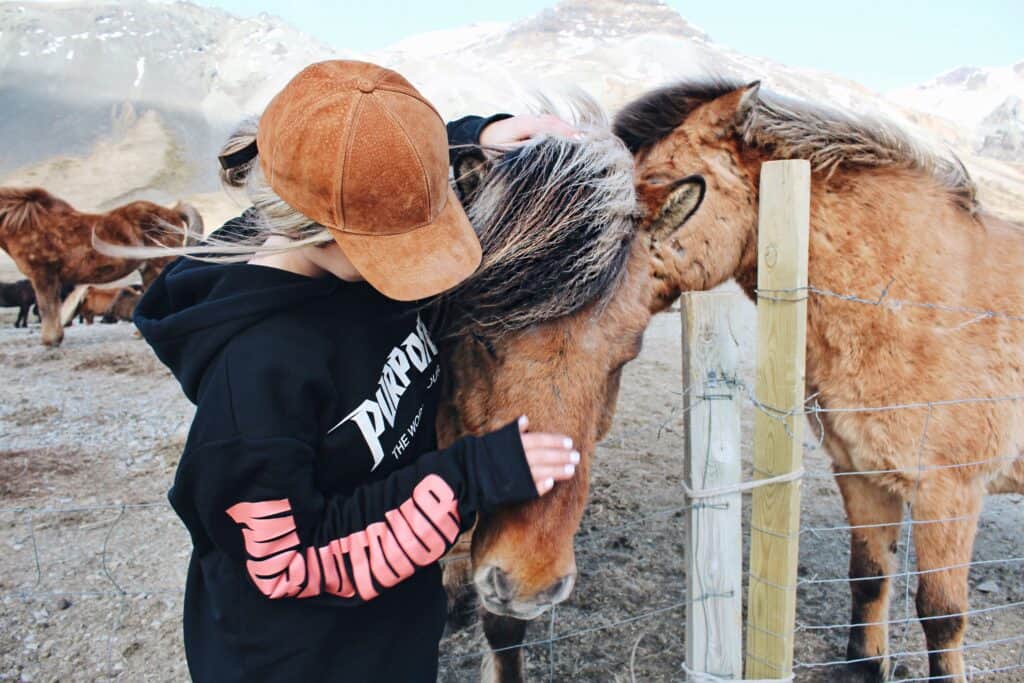
In the next part of this series, we will be discussing how to build your horse's confidence when riding.

